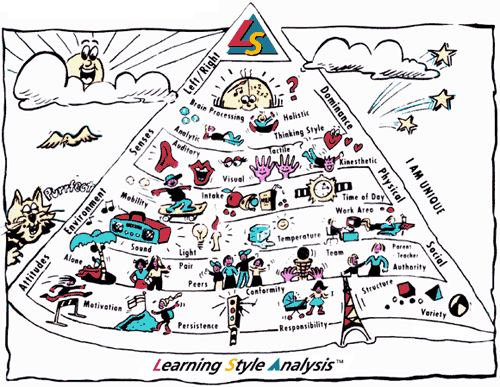If you think about it, e-books make sense: they save paper and shipping cost, you can store them mor eeasily, you can carry a thousand of them in your handbag.
Moreover, many e-readers come with an Integrated Dictionary, which allows you to look up words you’re not sure of. The Text To Speech function will read out the text for you, ultimately turning your e-book into an audio book. Colour displays are available on some e-readers. At the moment, you have a choice of bright colour with a computer-like screen (thus losing the like-paper look of e-paper display e-readers), or faded colours with an e-paper display that’s easy on the eyes.
So while the trend towards accepting e-books is continuing, you have to wonder why e-books have not taken over the book world completely. The answer lies in people's preferences, and those can be best illustrated using the framework of learning style elements.
If your learning style displays a strong preference for reading (as opposed to listening), the audio feature of the e-reader is not going to do anything for you. If your learning style indicates a preference for kinesthetic internal input, you may discover you're sentimental and don't want to part with paper books. Similarly, if your learning style has non-preference for change, switching from paper to electronic format is going to cause you stress.
Fortunately, paper books ar enot going anywhere for now.

2 comments:
I am familiar with the concept of individual learning styles, but I never considered that a preference of e-book to print would be related. I recently examined my company's approach to learning styles (see http://www.everblue.edu/blog/everblue-understands-you) but now I wonder if there is more that we can be doing to fully address this issue. We currently only offer print materials to our customers. It now seems worth it to look into providing digital materials.
Thank you for your comment, Lesley. I think with e-books being more interactive, and also with the potential to include graphics and videos (on iPads etc.), I do think electronic training materials are worth looking into. Good luck!
Post a Comment